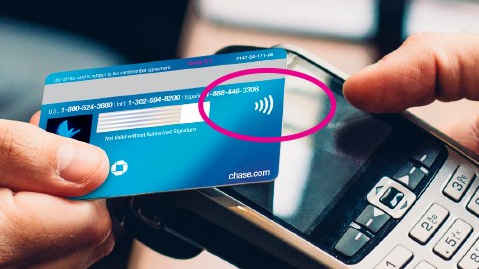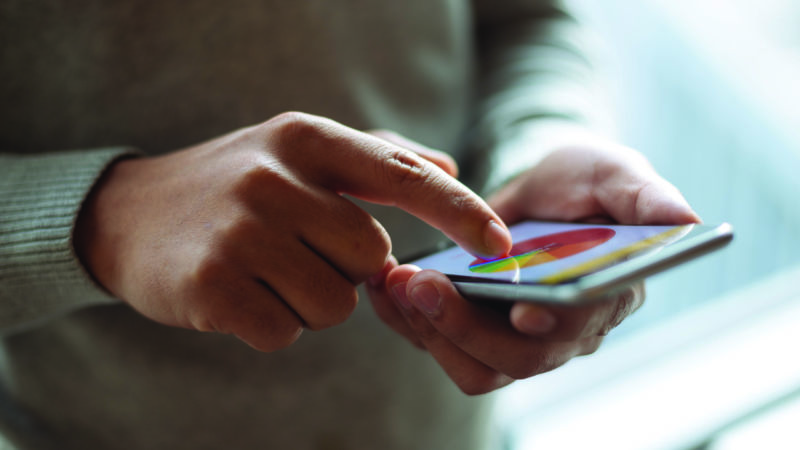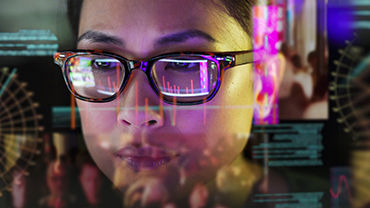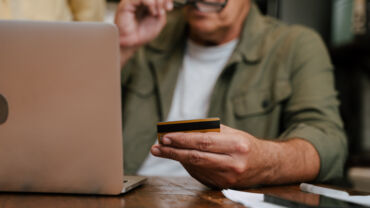Is COVID-19 moving the world toward a place where almost all financial transactions are not conducted with cash, but with transfer of digital information?
Thomson Reuters technologist and futurist Joe Raczynski explains why cash may no longer be king and how the fear of banknotes carrying and passing the coronavirus itself may help get us there more immediately.
Legal Executive Institute: The World Health Organization (WHO) recently indicated that washing your hands after handling money, especially if handling or eating food, is a “good hygiene practice” but they stopped short of issuing any formal warnings. How can technology help guide this conversation?
Joe Raczynski: Sooner than we thought, we will be moving away from the possibility of literal dirty money, meaning legal cash tender. Believe it or not, the United States was on the cusp of issuing a digital dollar on at the end of March. As part of the early draft for the COVID-19 stimulus package, bold and powerful policy makers vied for the creation of a Digital Dollar.
Having presented on this topic for the last four years, I was ecstatic to see this development. The concept was to have the US Department of Treasury issue FedAccounts to everyone in the country. Normally, FedAccounts are only issued to qualified banks.
In essence, these accounts would create digital wallets for everyone. Once released, stimulus money could be sent directly to each person in moments. Ultimately, the concerns around logistics and privacy became too significant a barrier, but clearly it is only a matter of time before we have a digital wallet issued by the US government.
Legal Executive Institute: China has taken measures to sanitize their cash. Is this really a path forward for global payment systems?
Joe Raczynski: Yes and no. Multiple news reports claimed that China was burning their paper currency to prevent passing bank notes infected with the virus. Based on the scientific evidence for how long the virus can stay on surfaces, it is logical to reduce the risk by avoiding paper or metal currency.
Fortunately, China had already transitioned to a nearly cashless society. With AliPay and WeChat Pay, nearly everyone in China is using QR Codes to exchange money digitally in person and through digital wallets online. From what I understand, payments via these two platforms make up roughly 80% of all payments in China. That’s huge! The next step will be the People’s Bank of China issuing a Digital Currency Electronic Payment (DCEP) sometime in the next six months. More than likely this will utilize the benefits of blockchain technology — immutable, secure, and transparent.

This last benefit is potentially problematic for the Chinese people. When their digital currency is used, China will have direct insight into the finances of everyone in the country, and beyond, as China’s plan is to roll this out globally, especially in Asia and Africa. The Chinese government has stated that this will help them fend off money laundering, as suspicious transactions can be immediately audited and examined with ease.
Legal Executive Institute: Prior to COVID-19, how close were we to moving to contactless payments?
Joe Raczynski: Most countries in Europe and Asia currently have available some sort of contactless payment system. In the UK and the rest of Europe, the popular payment method is hovering your debit or credit card over the terminal and the payment is processed immediately. They have been doing this for years. The US is just beginning to use the contactless card payment system. Apple Pay, Samsung Pay, Android Pay, all have been around for years now, and are popular with a younger demographic.
With the virus outbreak, more establishments have been pushing for these transactions, which still use banks and credit card processers like Visa, Mastercard, and American Express.
Legal Executive Institute: How feasible it is for retailers use contactless payments as a primary payment method?
Joe Raczynski: We are at a point where most, if not all transactions could be contactless. Many startups, semi-casual restaurants, and small businesses aim to only use contactless payments — for example, like Square does.
Similarly, individuals transacting with others can send money to each other via private bank enabling systems like Zelle, Venmo, Apple Pay, or Google Pay. Clearly credit cards and virtual gift cards have been popular with online merchants for years.
The primary setback for pure contactless and credit card transactions are the unbanked — US adults who do not have a checking, savings, or money market account. According to the Federal Reserve, about 6% of US adults fall into this category.
Legal Executive Institute: Are mobile payments the answer?
Joe Raczynski: Unequivocally yes! Most semi-modern mobile devices have the capability to add credit or debit cards by mapping them to your mobile app payment system of choice. This is a partial solution, for those with access to the banking system, which is the majority in the US. However, to cover all, the idea of the Digital Dollar in a government-issued wallet would be ideal.
Legal Executive Institute: In the US, major mobile payments apps had adoption rates of less than 10%, according to the Pew Research Center. What are the major hurdles for adopting mobile payments as a primary payment method?
Joe Raczynski: While smartphone use is at roughly 81%, according to Pew, the primary hurdle for contactless payment in the US is actually habit. We are accustomed to swiping cards or inserting them into a device for chip reading.

Education is also key — many people are unaware they can hover their card over a payment terminal to do the transaction. (Look for the wireless symbol on your card to see if this is feasible.) Clearly migrating to app-based transaction on your smartphone will grow in popularity too. And with the pandemic, the push to contactless payments is a given.
Legal Executive Institute: What might payments look like in the future, and how can we protect against fraudulent activity?
Joe Raczynski: I honestly believe some dramatic shifts are about to take place with our primary forms of money. With the advent of blockchain technology, there will be a fission between state-sponsored fiat money and privately-run currencies. The philosophical and theoretical concerns, challenges, and opportunities are innumerous, but not insurmountable.
Facebook’s Libra project, for example, is an effort by a private company to issue a global currency. The idea is to create a permissioned blockchain where a set number of trusted participants (100 or so) control the rules and define total circulation of the coin. While Libra has met with significant headwinds, this is very likely our future, in some incarnation. Facebook, or more likely, a large private company outside of the US will succeed here. If Facebook perseveres, it could create a global currency usable by half the world population overnight, which is extremely powerful, albeit a bit threatening to sovereign nations.
What will be fascinating to watch is the push by governments around the world to issue their own digital currency in the next few years to counter the private company coins. According to the International Monetary Fund, 50 countries are now exploring issuing their own digital currency.
The major dilemma for state-sponsored digital money, however, is the question of whether they pursue blind payments or clear payments. That means, will they allow people to use the digital currency like paper currency by concealing private information through cryptography? Or will they wander down the Chinese model and make it all traceable by the government, which would certainly help curtail nefarious transactions but could ebb civil liberties.







